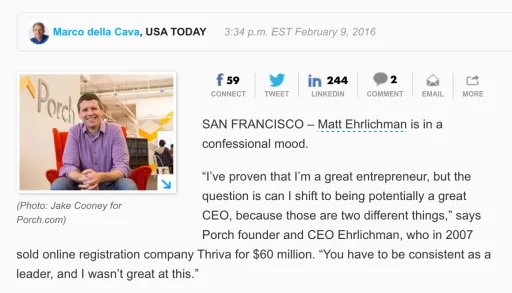 A former client (and now friend) asked me to speak to his team this past week. He’s a great guy, caring leader, and a hard working executive who is always interested in growing and learning.
A former client (and now friend) asked me to speak to his team this past week. He’s a great guy, caring leader, and a hard working executive who is always interested in growing and learning.
His business has been hit with unrelenting head winds and his team has had some recent attrition. But, rather than give up or tread water in place, he wants to help his team find inspiration and motivation to not only get through this rough patch in 2016, but also excel and write a new story this year.
He wanted me to share some ideas that would help his team’s mindset and encourage them take action to rock 2016.
Here’s what I shared with them.
1. ATTITUDE #1 – It starts with you:
We started with a fun exercise. I asked them all to take one blue sticky note from the pack that I gave them. Then, I asked them to place the sticky note as high as they can on a wall in the room.
When they were all settled back in their chairs, I asked them to retrieve their blue sticky note and place it higher than where they initially placed it. Some climbed tables and chairs to place it higher and some stuck it to the actual ceiling. One person, my former client, left the room, rode the elevator to a higher floor, and placed it on the wall there.
My question to them was, “Why didn’t you do that the first time?” As leaders, our own limiting beliefs not only impact our own performance, but our team members’ performance as well.
Point: Your attitude is everything. Question your limiting beliefs.
Question: Does your team’s performance in 2016 start with your own attitude?
2. ATTITUDE #2 – Embrace the constraints:
There are a lot of constraints on building a successful business. Money, time, family commitments, education, taxes, local infrastructure, etc. The list is endless. But, what if constraints actually helped, rather than hindered.
There is a fair amount of research that suggests constraints can actually be used to increase motivation, performance, and success. One of the classic examples is the story in the book, The Goal, by Eliyahu M. Goldratt. Using the Theory of Constraints in manufacturing, the main character is able to turn around an underperforming business by embracing the constraints.
But, the example I used during my time with this team was the story of Futsal. James Clear does a nice job of outlining the history of this soccer-like game that was developed in 1930 in his article, “How Constraints Make You Better: Why the Right Limitations Boost Performance.” When students played Futsal on a small surface area, with fewer players, and with a smaller ball, it actually increased their ability to play soccer. Read the article and you’ll see why “constraints” and Futsal helped Brazil win three World Cups.
In my own work with Founding CEOs I’ve seen the same idea applied nicely. “Since we didn’t get the full amount we expected in this seed round, how can we still meet our objectives?” It’s a powerful question that taps into the deep recesses of our imagination in a way that an abundance of resources just can’t do.
Point: You can actually use constraints to improve performance. Embrace them.
Question: Are you tapping into the power of constraints?
3. ACTION – Ask more beautiful questions to encourage greater creativity:
I have a lot of favorite books. It’s a problem. 🙂 One of them is “A More Beautiful Question: The Power of Inquiry to Spark Breakthrough Ideas,” by Warren Berger. He does a nice job of helping all of us understand the power of questions to help individuals and teams really break through.
When I spoke about this topic to last week’s team, they did like most do when I bring up this subject. They think it’s a great idea and then want me to provide examples. I shared a few and then engaged their brains to think of some. In my opinion, it’s not about more effective questions, it’s about more beautiful questions, just like Warren’s title. It’s the type of question that taps into your team’s imagination.
Here’s one you might chew on for awhile: “If 2016 was our last year in business, what achievement bullet would you want to be top on your resume to help you get an even better job in 2017?” Can you see the underlying power behind this question?
Point: You can serve as a catalyst to your team’s fatalistic thinking and flip it around to make great things happen in 2016.
Question: Are you asking more beautiful questions?
4. NATURAL INFLUENCE – Know, Connect, & Leverage Your Team’s Motivations:
By this time, the team I was with was just starting to warm up to me. But, they were still skeptical.
The common mantra at this organization is, “We need to drive performance.” I can’t tell you how much I loathe that statement. It comes from an attitude that suggests pushing is best. It suggests that it is our energy as a leader that is needed to get performance from our team members. I’m sorry, in my experience, it just doesn’t work that way.
How does it work? Tap into the individual and collective motivations of your team members and that is how you and your team will crush 2016.
What does that look like in practice? Well, here is a question that one of the participants asked me: “What do we do with our low performers?” It’s a common and legitimate question. But, my response is the same. Tap into their individual and the collective motivations of the team.
Each member of your team has a set of interests that energize them, a set of expectations about how the people and the environment interact with them, and a set of values that currently inspire them. It’s your job as a Founding CEO to help your team members gain clarity on these motivators and help them find a connection to the goals of the organization. How? Coaching conversations that focus on them, rather than on you, often work.
So, what about the collective motivators? Dan Pink’s book, “Drive: The Surprising Truth About What Motivates Us,” is a great primer on this subject. His and others’ research suggest that autonomy, mastery, and purpose are three key common motivators amongst all of us.
- Do you team members feel in control?
- Do your team members feel like they can use their full potential and grow?
- Do your team members feel like the work your company does matters and is making a positive impact?
I told the group a story of a rather embarrassing incident when I was a young platoon leader in the Army. I thought my soldiers needed a morale boost so I went out and found an artist to create what amounts to a team logo on a flag stick. In the military we call it a guidon. Well, it was a disaster. They hated the design, hated the idea, and it did the opposite of what I intended. Why? It was not their idea. They weren’t in control. It didn’t help them grow or learn in any way. And, it certainly didn’t matter or make a difference on our mission.
I learned an important lesson.
Point: You can help your team find their individual and collective well spring of motivation in 2016.
Question: Are you helping to tie your team’s personal and collective motivations to the mission?
In summary
Attitudes, questions, and motivators. Get these things right in 2016, and you and your team will crush your objectives this year.
What do you think?
What will you do differently in 2016?
Send me an email and let me know.



